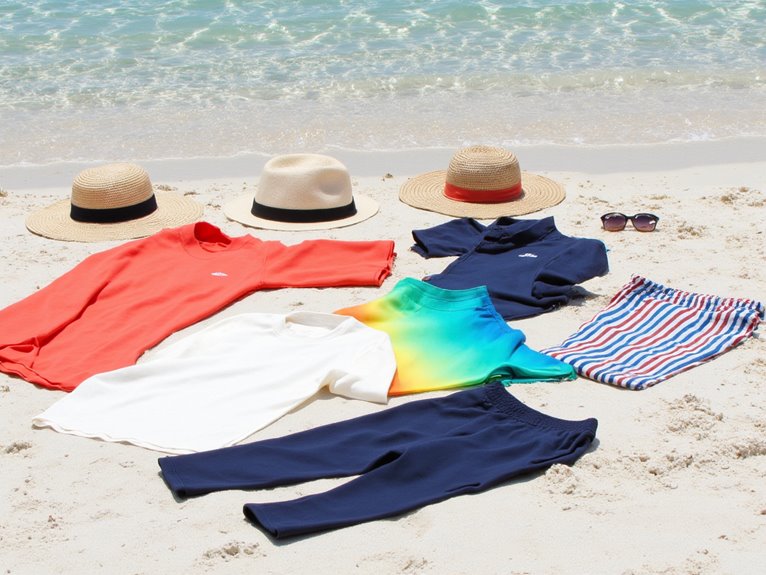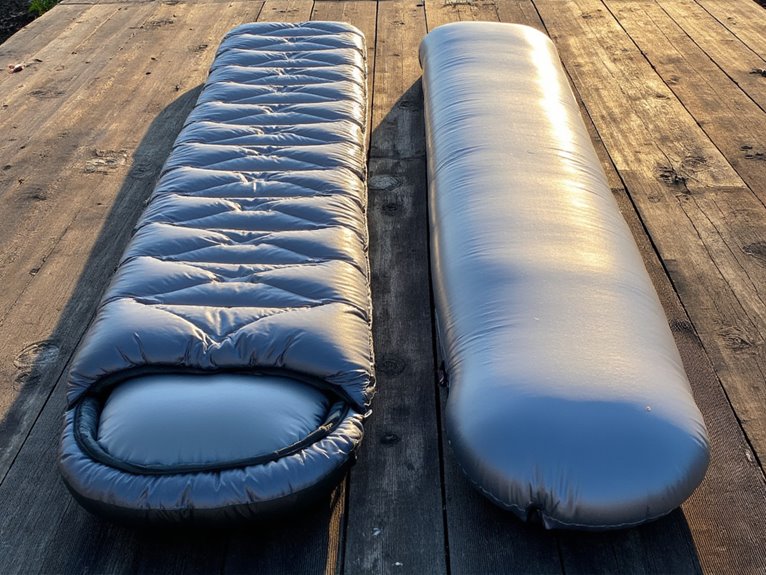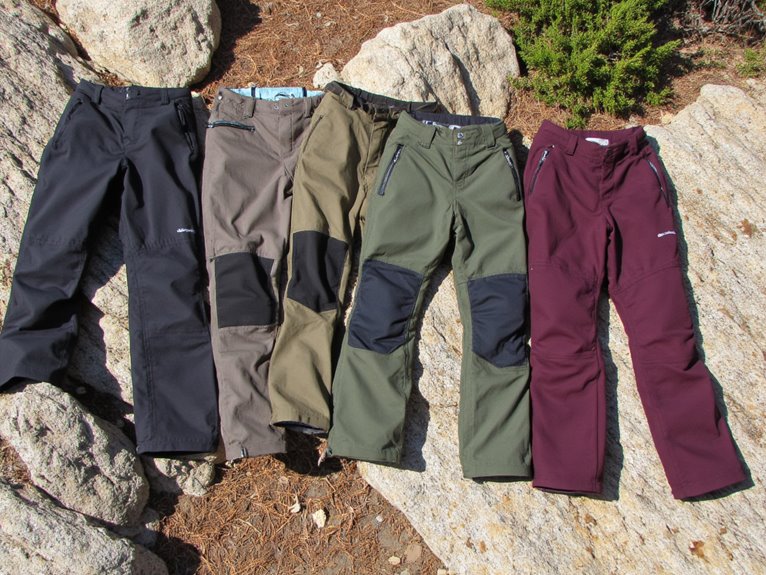Do Canoes Flip Easier Than Kayaks?
Canoes are inherently more prone to flipping than kayaks due to their design and stability characteristics. The wider, more angular hull of a canoe makes it more susceptible to capsizing, particularly in rough waters. In contrast, kayaks have a lower center of gravity and a more rounded hull, providing greater stability and control. While paddler weight distribution and environmental factors also play a vital role in stability, the design differences between canoes and kayaks make canoes more likely to flip. Delve into the nuances of canoe and kayak design to better understand the risks and rewards of each craft.
We are supported by our audience. When you purchase through links on our site, we may earn an affiliate commission, at no extra cost for you. Learn more. Last update on 14th December 2025 / Images from Amazon Product Advertising API.
Design Differences Between Canoes
The sleek, streamlined hull of a canoe, carefully crafted to slice through the water with ease, belies the subtle yet significant design differences that can greatly impact its stability and propensity to flip.
Canoe designs vary in width, length, and depth, which affect their stability and maneuverability.
A wider canoe provides more stability, while a narrower one is more agile but less stable.
The depth of the hull also plays a vital role, as a deeper canoe is more resistant to capsizing.
Additionally, the shape of the bow and stern can influence a canoe's tracking ability and stability.
Understanding these design differences is essential for paddlers to choose the right canoe for their needs and minimize the risk of flipping.
Kayak Stability Advantages
While canoes require careful design considerations to achieve stability, kayaks inherently possess several stability advantages that make them a more forgiving and accessible option for paddlers.
One key advantage is the kayak's lower center of gravity, which reduces the likelihood of tipping.
Additionally, kayaks typically have a narrower beam and a more rounded hull, allowing them to slice through the water with greater ease and stability.
This design enables kayakers to maintain a more upright posture, further enhancing stability and control.
As a result, kayaks are generally more stable and easier to maneuver, making them an attractive option for beginners and experienced paddlers alike.
Canoe Width and Stability
Canoes, unlike kayaks, often require a wider beam to accommodate the kneeling or sitting paddler, which can compromise stability, particularly in rough waters or with novice paddlers. This increased width can make canoes more prone to tipping, especially when encountering waves or strong winds.
There are some key factors to consider when evaluating canoe stability:
A wider canoe can provide more stability at rest, but may be more susceptible to tipping in dynamic conditions.
The hull shape and design can greatly impact stability, with rounded hulls providing more stability than flat or V-shaped hulls.
The paddler's position and weight distribution also play a critical role in maintaining stability.
The canoe's center of gravity, influenced by the paddler's position and cargo, affects its overall stability.
Material selection, such as lightweight yet durable materials, can also impact stability and performance.
Paddler Weight Distribution Matters
The paddler's weight distribution has a profound impact on the canoe's stability.
A paddler's weight, positioned centrally and low in the canoe, provides stability.
However, shift forward or backward, and the canoe's center of gravity is disrupted, making it prone to tilting.
Even slight adjustments, such as leaning or stretching, can alter the canoe's buoyancy.
A paddler must be mindful of their weight distribution, making subtle adjustments to maintain equilibrium.
Water Conditions and Flipping
Rippling waves, strong currents, and submerged obstacles can transform a serene paddle into a precarious balancing act, substantially increasing the likelihood of a canoe flip. Water conditions play a significant role in the stability of a canoe, and paddlers must be aware of their surroundings to avoid capsizing.
Some key water conditions to consider include:
- Wind direction and speed: A strong gust can catch a canoe off guard, making it difficult to maintain balance.
- Water depth and clarity: Murky or shallow waters can hide submerged obstacles, increasing the risk of collision and flip.
- River currents and eddies: Strong currents can sweep a canoe off course, making it prone to flipping.
- Wave patterns and size: Large waves can swamp a canoe, while chaotic wave patterns can make it difficult to maintain direction.
- Water temperature and density: Extreme temperatures or density changes can affect the canoe's buoyancy and stability.
Hull Shape and Flip Risk
A canoe's hull shape substantially influences its stability and flip risk.
Rounded hulls, common in recreational canoes, provide greater initial stability, making them more resistant to flipping. However, they can be more prone to sudden and unexpected capsizing.
In contrast, V-shaped hulls, often found in performance canoes, are more sensitive to paddle input and require more skill to maneuver.
Understanding the characteristics of your canoe's hull shape allows you to adjust your paddling technique and anticipate potential flip risks, increasing your confidence on the water. By recognizing the strengths and weaknesses of your canoe's design, you can paddle with greater precision and control.
Paddling Style and Balance
As we delve into the complex dynamics of canoe stability, it becomes clear that paddling style and balance play a vital role in preventing flips.
A nuanced understanding of paddle angle, posture, and stroke style is essential for maintaining equilibrium on the water.
Paddle Angle Matters
Proper paddle angle is vital in maintaining balance and preventing the canoe from flipping, as even a slight deviation from the ideal angle can disrupt the boat's equilibrium.
A well-executed paddle stroke involves a precise angle of entry, which affects the canoe's stability and direction.
Entry angle: Aim for a 10-15° angle between the paddle and the water's surface to minimize resistance and maintain stability.
Paddle face orientation: Keep the paddle face parallel to the water to ensure a smooth entry and exit.
Paddle depth: Submerge the paddle 1-2 inches below the surface to maximize power and control.
Exit angle: Maintain a similar angle to the entry angle to maintain momentum and stability.
Body rotation: Rotate your torso to generate power and maintain balance, keeping your paddle angle consistent throughout the stroke.
Posture and Stability
Maintaining a dynamic posture, characterized by a slight forward lean and engaged core, is essential for generating power, balance, and stability while paddling a canoe.
This posture enables paddlers to maintain a low center of gravity, making it more difficult for the canoe to tip or flip.
A strong core and stable lower body also allow paddlers to absorb waves and bumps, reducing the likelihood of capsizing.
In addition, a dynamic posture enables paddlers to adjust quickly to changing water conditions, making it easier to navigate challenging waters.
Moreover, by maintaining proper posture and stability, paddlers can enjoy a more confident and controlled paddling experience.
Stroke Style Importance
A canoeist's paddling style, characterized by a smooth, controlled, and rhythmic stroke, serves as the foundation for balance and stability in a canoe.
A well-executed stroke helps maintain equilibrium, reducing the likelihood of capsizing. A paddler's technique can profoundly impact the canoe's stability, making it essential to develop a skilled and efficient stroke.
A powerful forward stroke helps maintain direction and stability.
A smooth, controlled turn stroke enables effortless turns without compromising balance.
A well-coordinated draw stroke helps with sideways movement and stability.
A strong, yet gentle, bracing stroke provides additional support and balance.
A consistent and rhythmic stroke pattern helps maintain balance and stability.
Additional Stability Factors
Centerboard and skeg design, two vital components of a canoe's hull, profoundly impact its stability, as they influence the vessel's ability to track straight and resist capsizing.
The centerboard's size, shape, and position can greatly affect the canoe's stability, while the skeg's design and placement can either improve or hinder the vessel's tracking ability.
Additionally, the hull's rocker profile, or the upward curvature of the hull, also plays a key role in stability.
A canoe with a pronounced rocker profile will be more stable than one with a flatter profile.
In addition, the placement and design of seats, footrests, and other interior components can also influence the canoe's stability.
These often-overlooked factors can greatly impact the canoe's overall stability and propensity to flip.
Real-World Experience and Data
Numerous studies and real-world observations have consistently shown that canoes with a narrower hull and a more pronounced rocker profile are more susceptible to flipping. This is because a narrower hull provides less stability, and a more pronounced rocker profile makes the canoe more sensitive to shifts in weight.
A study by the American Canoe Association found that 70% of canoe flips occurred in canoes with a hull width of less than 30 inches.
Data from the United States Coast Guard reports that canoes are involved in 25% more accidents than kayaks.
A survey of canoe instructors found that 80% reported flipping a canoe at least once in their career.
Real-world observations of whitewater canoeing reveal that canoes are more likely to flip in Class III rapids or higher.
A study on canoe design found that a rocker profile of more than 10 degrees increases the likelihood of flipping by 40%.



